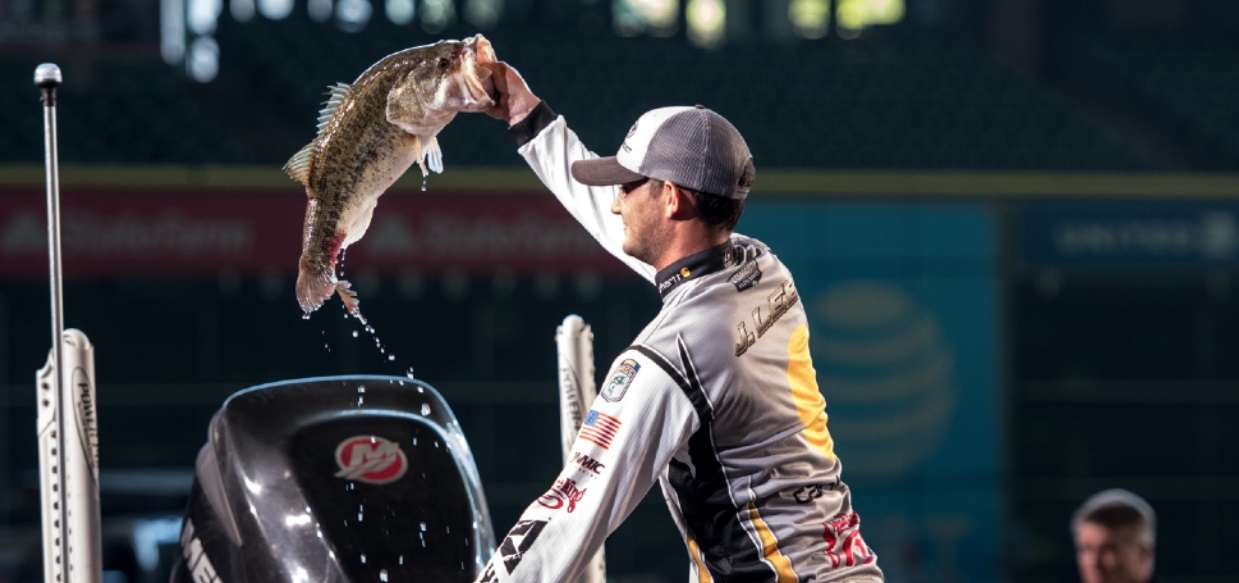
Carhartt Elite Series pros Terry Scroggins and Jordan and Matt Lee spend each tournament season trying to outwork the competition and win 3-4 day derbies. But none of them got started fishing multi-day events. Each cut their teeth on lakes and rivers in their state’s backyard, fishing one-day club and jackpot tournaments for a little cash and bragging rights.
Scroggins and the Lee brothers took a look back at their days as weekend warriors to break down the unique differences in one-versus multi-day tournaments, breaking down what you need to do to win a single-day derby this summer.
Perfect Your Prefishing
For the majority of weekend anglers, managing time on the water prior to a single-day tournament is crucial. The work week and other obligations can limit prefishing opportunities, forcing you to be as efficient as possible to have success.
When it comes to picking when you’re going to prefish, Jordan Lee says the closer to derby day the better. “The best time to get out there is the day before the tournament,” he says, “A lot of people make the mistake of prefishing too much, getting out there weeks before. Fishing changes so much week-to-week, even day-to-day, that getting out there that early can hurt you.”
Scroggins, who still fishes club tournaments on the St. John’s River each year, understands the importance of a big bite in a one-day tournament. Scroggins adds, “Typically, the team that gets one big bite will win. In Elite Series events, guys are looking for areas that have fish with a quality average. But when practicing for a one-day, you’re really looking for baits or areas that are going to give you the best shot at a big bite. You’ve really gotta swing for the fences.”
Scroggins utilizes his electronics to get a better idea of fish size. When he’s confident in what his graphs are showing, he’ll hold back from fishing it in practice and hit it only during the tournament.
Planning for weather can be even more important. Scroggins notes, “When practicing for three- or four-day derbies, you’ll have maybe 10-12 spots. Other anglers may find about eight or nine of those and then, depending on the weather, two more may be ruled out. With just a one day event, you’ve gotta use the weather forecast to guide where you look in practice.” For example, if your bite is dependent on wind, use the forecast to predict what spots will have that needed breeze and expand your understanding of those areas.

Managing Your Spots
How many spots an angler needs, the type, and the managing of these waypoints varies greatly between one- and multi-day events. With no point systems or participation awards, there are a few things to keep in mind as you try to bring a big bag to the scales.
Matt Lee explains that multi-day events are about finding patterns, but a one day tournament can be all about the spot. For three- to four-day tournaments, Matt aims to get a deep understanding of what stage the fish are in and build upon three or four patterns that can efficiently target the quality of fish he needs.
His practice mindset for single-day derbies is drastically different, “When I am going out a day or two before a single day tournament, I’m trying to locate where the biggest fish in the lake live. You’ll always need one to two big bites to win. Of course I’ll move around to fill a limit, but after that I’ll stop on a bridge for a few casts, pull up on a dock I’ve got big bite history with, or throw a few more casts out deep just to try and get those needed big bites.”

Jordan is on the same page as his brother, “Multi-day events are a lot about finding a pattern. During four-day events, we’ll [Elite Series pros] even fish new water. But a one-day derby can definitely be more of a spot deal. You don’t need to save fish for another day, so when you’re getting bites in an area you should really hunker down and use up all the fish its got.”
Considering Co-Anglers
In most club and jackpot trails across the nation, it’s a team effort to put a competitive limit in the boat. The gameplan changes significantly with a co-angler added to the mix.
Scroggins will still run his boat and fish his style in his team formats, but acknowledges his partner only adds to the gameplan, “My teammate is always throwing something different. They’ll throw a smaller bait to generate bites and fill out our limit while I target bigger bites.”
Jordan echoes the importance of throwing different baits, “Sometimes little differences like throwing a shallow running jerkbait versus one that’ll run a medium depth can get you twice as many bites. Unless you’re really dialed in, the partner should always be throwing a different bait even if it’s only a smaller variation.”
Boat positioning may change as well. Elite Series pros separate themselves from average anglers by maximizing the time their bait is in the strike zone.
Managing bait presentation with a co-angler in the boat is a necessary skill.
In scenarios when fishing a line of vegetation or deep structure, or when
paralleling the bank, both anglers may need to fish from the front deck. During practice, get comfortable with your teammate on managing space and casting angles while both fishing from the front of the boat.
Matt believes that chemistry can’t be overlooked in team tournaments, “It really helps to fish with someone you mesh with. From my experiences, back to the days I fished the Carhartt College Tour, it really helped Jordan and I to be able to shoot ideas off one another. You’ve gotta be able to say when what you’re doing isn’t working or be able to tell your partner they should be throwing something different. It’s all about communication and not one guy running the show.”





